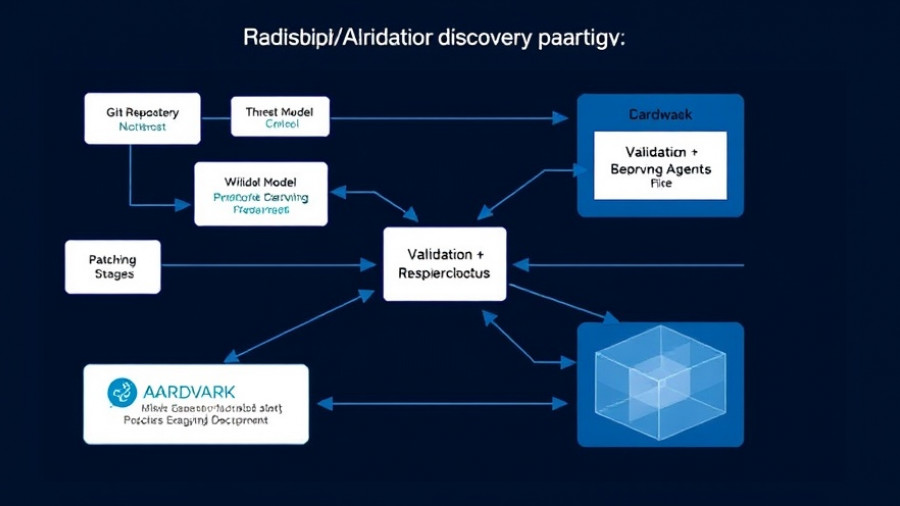
Stripe’s Injection of Agentic AI into the Payment Ecosystem
In a move that promises to redefine commerce, Stripe is pushing the boundaries of traditional payments by integrating agentic artificial intelligence (AI) into their platform. Chief Data and AI Officer, Emily Sands, underscores a transformative vision, stating that “commerce is about to change fundamentally.” This evolution positions Stripe at the forefront of a rapidly changing landscape, where payment companies race to adopt innovative technology and protocols for agentic AI.
Stablecoins and Agentic Commerce: A Groundbreaking Cotangent
Stripe's new offerings aren't just about enhancing payments; they include an equally intriguing focus on the development of stablecoins. Launching tools like Open Issuance, Stripe empowers businesses to create and manage their own stablecoins, positioning themselves as key players in an increasingly crypto-centric market. This comes straight from the need for merchants to hedge against inflation in countries with fluctuating currencies, offering a secure alternative to traditional banking methods.
Making Payments Easier with AI Agents
One of Stripe's notable innovations is the Instant Checkout feature integrated into ChatGPT. With this tool, users can seamlessly engage in transactions, like purchasing from Etsy directly in a chat session. Instead of fumbling through payment details, an AI agent manages the checkout process, maximizing ease for consumers and efficiency for merchants. Sands emphasizes that these agents are going to be “buying and paying on our behalf,” marking a pivotal shift in the payment dynamics.
Transforming the Merchant Experience
The advancements Stripe is making in agentic commerce aim not only to simplify transactions but also to enhance the merchants' control over their brands and customer interactions. By allowing merchants to maintain oversight on what products are sold through AI agents, they stand to benefit from a personalized yet automated selling experience. This is illustrated in the thoughtful integration between Stripe and platforms like Shopify, broadening merchants’ reach without complex technology dependencies.
Interoperability: Bridging Gaps in Agentic Commerce
As Stripe develops its Agentic Commerce Protocol, the goal is interoperability. This isn't merely Stripe-driven innovation; there’s substantial upward pressure from competitors like Coinbase and Google. Sands mentions that this push for interoperability is crucial, as merchants in the evolving agentic commerce landscape often feel overwhelmed by choices. By creating smoother transaction processes, Stripe aims to foster trust across the payment ecosystem, which is essential for consumer confidence.
Wrestling with Regulatory Challenges
With innovative fintech solutions come regulatory hurdles. Despite its ambitious plans, Stripe understands the importance of adhering to local regulations while promoting digital currency. The company collaborates with government entities and regulatory bodies globally to navigate the complexities involved. As companies like Stripe push for broader adoption of stablecoins and agentic AI in commerce, the balance between innovation and compliance becomes ever more pressing.
The Future of Payments: A Glimpse Ahead
Stripe is at a crossroads, merging traditional transaction systems with cutting-edge AI capabilities and stablecoin integration. The rise of agentic AI promises to create a more seamless, intelligent interaction between consumers and merchants. As Paul Harapin, Stripe’s Chief Revenue Officer for Asia Pacific, describes, the real-time efficiency of stablecoins and adaptive pricing mechanisms is poised to disrupt textbook approaches to payments within a decade. With rapid advancements in technology coalescing with an expanding global market, the results could redefine commerce as we know it.
Take Action Now to Embrace the Future
As Stripe embarks on this bold pathway, merchants and businesses globally must stay attuned to these developments. Adopting stablecoins and leveraging AI agents can markedly streamline operations—from keeping pace with consumer demand to curbing costs. This is the moment to re-evaluate how technology can reshape commerce in your business strategy.
 Add Row
Add Row  Add
Add 




Write A Comment